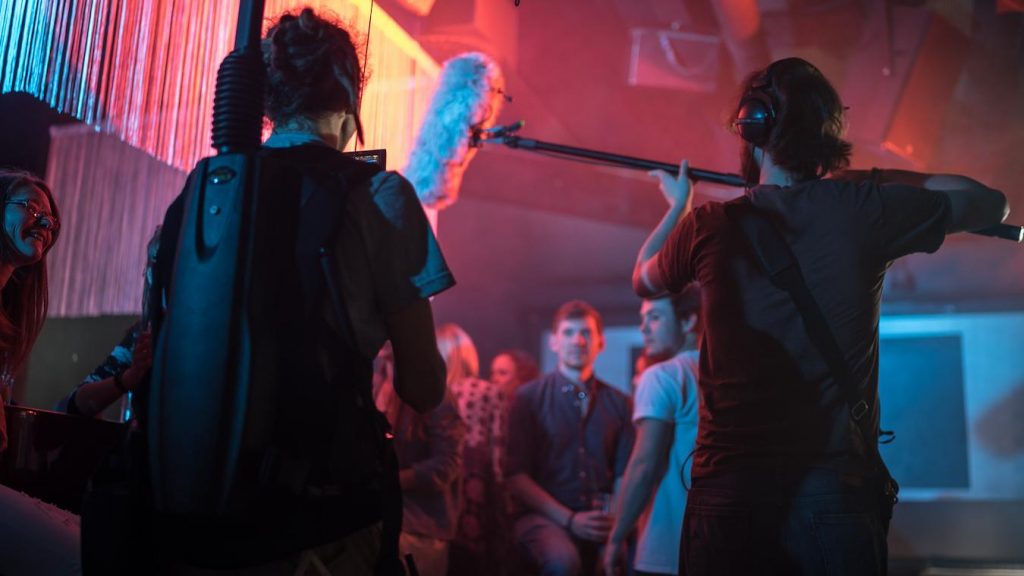What is a sound stage?
A sound stage is an area in which sounds are recorded and/or viewed. It can be any size, but is typically a relatively large space used for staging film and television productions.
The physical set may comprise one or more rooms organized to provide the appropriate acoustic environment for filming sound scenes, while the actual recording process often takes place in specialized facilities such as studios.
Essential features of a sound stage

Image Credit: macksennettstudios.net
A sound stage typically comprises several rooms, which are designed to provide an acoustically realistic environment for filming sound scenes. The room sizes and configurations can vary greatly from production to production, but some typical features include soundproof walls, cameras, rentals, catwalks & ceiling lights.
The surrounding walls may be covered in acoustic fabric or treated with various techniques such as foam absorption or diffusion panels to achieve the desired effect. Any large objects that could produce unwanted sounds (such as a large screen) may also be placed behind layers of sound-dampening material.
Each location where audio is being recorded has its own microphone preamps and other equipment, which allows for highly specific and accurate sound reproduction.
A typical film or television production will have a number of different sound stages scattered around the country. The largest stage is often used to shoot scenes with large sets (such as huge sci-fi movies), while smaller stages are typically reserved for more intimate productions.
Many TV shows also use ‘green screens’ – massive digital images that can be used to create an entirely new set in minutes, without having to actually build it on location. Some sound stages also have facilities to rehearse and record music scenes, as well as video production. Some sound stages have their own television studios so that producers can film scenes and then edit them together in real-time, without the need for post-production.
Some key features that make a sound stage into an acoustically realistic environment are:
– wall treatment panels to deaden sounds,
– multiple microphone positions throughout the room,
– individual amplification for each mike,
– precise acoustic isolation of each location recording, and
– precision tuning of audio equipment.
Many sound stages have specific acoustic treatments that can be customized to make them more realistic. Sound-dampening panels, diffusion fabric and other materials may be used to reduce the noise level in a room, while special microphones can pick up subtle sounds (such as footsteps) that would otherwise go unnoticed. Many studios also have facilities for audio mixing and mastering, which allows producers to tweak the volume levels of each track individually before shipping them off to film or television distributors. In the production of feature films and major television shows, a sound stage is often the largest space in a production facility.
The size and features of a sound stage vary depending on the particular purpose it is being used for, but generally they can be divided into three types:
– Large Stage Sound Stages: Used primarily for large sets and scenes with high levels of ambient noise (such as movies), these stages are typically quite large (50-20000 square feet) and have several rooms devoted to recording audio. They often have specific acoustic treatments that make them more realistic.
– Production Sound Stages: Used for general sound recording (such as dialogue, Foley and music), these stages are smaller (10-30500 square feet) and have less specialized acoustic treatments.
– Mini Sound Stages: Usually used for individual shots or small scenes, these stages are typically no more than 1000 square feet in size. There are also small sound stages (under 1000 square feet) that are used for specific purposes, such as casting auditions or filming short scenes.
Moreover, sound stages are also used for film and television post-production. During post-production, audio engineers may add Foley (additional sound effects), re-record dialogue or music tracks, or adjust the levels of individual sounds to provide a more polished and cohesive product.
Shooting a film on a sound stage
Sound stages are often used for film and television production. When shooting a film or television show on a sound stage, it is important to follow the specific guidelines that have been established by the production team. For example, certain sounds (such as gunfire) may be too loud or unrealistic if they are recorded in an uncontrolled environment such as on location. Accordingly, when shooting a scene on a sound stage, special measures must be taken to ensure that all audio recordings are accurate and realistic.
In addition to recording audio accurately, it is also essential to take into account other factors when shooting on a sound stage. For example, the size and shape of the soundstage can affect how actors interact with one another. Furthermore, set dressing and props must be placed in a specific location on the soundstage to ensure accuracy when filming scenes. Finally, it is important to keep in mind the acoustic treatment options available to producers on a sound stage. Certain types of treatments (such as room acoustics) can help create an immersive experience for viewers watching television or film at home.






